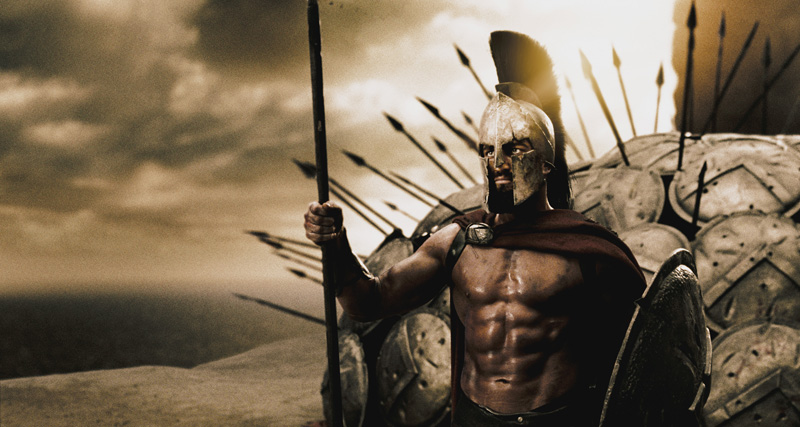“Pretty much anything Mark Twight offered up was so difficult in the kind of way where you wish you had never been born – and even more than that, wished he had never been born.” – Gerard Butler, King Leonidas
In 2007, an epic movie was released in theaters called 300 that chronicled an outnumbered Spartan army fighting off Persian soldiers in the Battle of Thermopylae. Legend has it that 300 Spartans held off about 100,000 Persians in a grim fight to the death.

The movie was fascinating to me because the entire cast of Spartans were in unbelievable shape. You could tell that they possessed a gritty, functional fitness by the way they looked and moved. After some research, I learned that they trained full-time for months to prepare for this movie. Their trainer was Mark Twight, founder of Gym Jones.
Check out the Gym Jones website. If you’re not scared to go in there and do a workout, you didn’t read enough of their site. Their approach to fitness appeals to me (maybe I’m a sadist) and I incorporate aspects of their workouts into my own gym routine.
Here is a glimpse at how the cast trained for the movie 300. I don’t see any Bowlfex machines in this gym, do you?
The Gym Jones Approach to Distance Running
The workouts that the cast did to prepare for the movie have some basic principles that are true across almost any sport. It’s a basic formula for success that when applied correctly, can help you focus on the “big wins” that will make you dramatically faster.
Keep it simple. None of the actors wore heart rate monitors or fancy gear when they trained. They got in the gym and dominated their workout without scrutinizing every detail. No Garmin GPS devices, no obsessing over every split, no bullshit.
Stop whining. Running isn’t fun all the time. You’re going to have bad days. Everyone does and what separates the great from the rest is the ability to keep their motivation high during times of bad running. Mark Twight called guys “losers” who couldn’t finish workouts – he valued a person’s ability to give it their 100% with no excuses.
It’s going to hurt, accept it. As a distance runner, I know that my sport hurts when I want to perform. I don’t try to avoid it like a football player either – in fact, I actively pursue it because it means I’m doing something right. Mark Wetmore, the cross country coach at the University of Colorado, has a great quote about this:
“In football, you might get your bell rung, but you go in with the expectation that you might get hurt, and you hope to win and come out unscathed. As a distance runner, you know you’re going to get your bell rung. Distance runners are experts at pain, discomfort, and fear. You’re not coming away feeling good. It’s a matter of how much pain you can deal with on those days. It’s not a strategy. It’s just a callusing of the mind and body to deal with discomfort. Any serious runner bounces back. That’s the nature of their game. Taking pain.”
Stick to the Basics. I love the look of Gym Jones – a bunch of free weights, boxes, rings, and a few scary items like a giant tire. You don’t see any bowflex machines, recumbent bikes, or Elliptigos. From a running perspective, it’s a call to stop worrying about negative-splitting your last interval on every 200 meters, or if your last workout was at tempo or half-marathon pace (they’re probably about the same). Do the miles, give your best on your workout days, and live to run another day.
I’ve mentioned before that I’m a minimalist runner (and not just about running shoes) so I think this is why I view the training for 300 as a direct parallel to distance running. Focus on hard work and the big items like volume, doing core and strength exercises 3-4 times per week, a solid long run, and a challenging workout. You can’t go wrong – and you probably won’t miss your Garmin.
To read more on Gym Jones’ approach to training Spartans and “creating a gang,” read Mark Twight’s article. If you want to incorporate more strength work into your running program but don’t know where to start, check out the Rebel Fitness Guide.